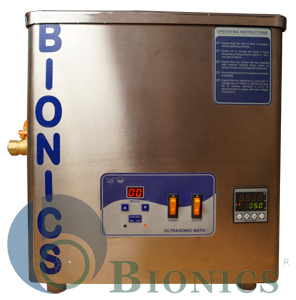Temperature stability in a rectangular water bath is crucial for accurate lab results. Fluctuations can compromise sample integrity, experiment outcomes, and overall lab efficiency. When the bath fails to maintain a steady temperature, it can lead to inconsistent heating, affecting research quality in fields like microbiology, pharmaceuticals, and chemical analysis. Understanding the causes behind these fluctuations and how to fix them ensures precise and reliable performance in the lab.
Temperature fluctuations can happen for several
reasons—ranging from poor calibration to environmental factors—but the good
news is, that most of them are fixable.
What Are Temperature Fluctuations in a Water Bath?
A temperature fluctuation occurs when a water bath fails to
maintain the set temperature, leading to instability in heating. These
fluctuations can be categorized as:
1. Sudden Spikes or Drops
The temperature unexpectedly rises or falls beyond the set
point, which can cause sample overheating or underheating.
2.
Gradual Drift
Over time, the bath’s temperature slowly shifts away from
the set value, leading to inaccurate results.
3.
Uneven Temperature Distribution
Some areas of the bath stay hotter or cooler than others,
which can create inconsistent heating across different samples.
These fluctuations can significantly impact research
quality, especially in microbiology, pharmaceuticals, and chemical analysis,
where precise temperature control is essential.
Why Do Temperature Fluctuations Happen?
There are several reasons why a water bath might struggle to
maintain a stable temperature:
1. Calibration Issues
An improperly calibrated water bath might display incorrect
temperatures, leading to unintentional fluctuations.
2. Poor Water Circulation
In non-circulating water baths, the water remains stagnant,
leading to hot and cold spots.
3.
Heat Loss Due to Lid Issues
Leaving the lid open for too long or using the bath without
a lid allows heat to escape, making it difficult to maintain a steady
temperature.
4.
External Environmental Factors
Air conditioning, open windows, or nearby heat-emitting
equipment can interfere with the bath’s temperature regulation.
5.
Faulty Heating Elements or Sensors
Over time, heating elements or temperature sensors can
degrade, leading to inconsistent performance.
6.
Low Water Levels
If the water level is too low, heat doesn’t distribute
evenly, leading to localized overheating or cooling.
7. Power Supply Issues
Fluctuations in voltage or an unstable power source can
directly impact heating efficiency.
How to Fix Temperature Fluctuations in a Water Bath
Now that we know why temperature fluctuations happen, let’s
discuss how to fix them:
1. Regular Calibration
Use a certified thermometer to compare the displayed vs.
actual temperature and adjust calibration settings accordingly.
2. Improve Water Circulation
If your bath does not have an internal circulation system,
manually stirring the water at regular intervals can help maintain even
heating.
3. Use the Lid Properly
Always keep the lid closed when the bath is not in use to
minimize heat loss.
4. Optimize Placement
Avoid placing your water bath near AC vents, windows, or
heat-generating equipment, as these can interfere with temperature stability.
5. Inspect & Replace Faulty Components
Regularly check the heating elements and temperature sensors
for wear and replace them if needed.
6. Maintain Proper Water Levels
Ensure the water level is at the recommended mark to allow
proper heat distribution.
7. Upgrade to a PID-Controlled Water Bath
For precise temperature control, consider switching to a
PID-controlled water bath, which automatically adjusts heating to maintain
stability.
Conclusion
Temperature fluctuations in a water bath can be frustrating,
but with regular calibration, proper maintenance, and smart troubleshooting,
you can achieve consistent heating and accurate lab results.
At Bionics Scientific Technologies (P) Ltd., we specialize
in manufacturing ISO-certified rectangular water baths with advanced PID-based
temperature control, eliminating fluctuations for stable and reliable
performance. With over 25 years of expertise, we are trusted by pharmaceutical,
biotech, and research labs worldwide.
By implementing the right solutions and using trusted lab
equipment, you can maintain consistent heating conditions and ensure the
accuracy of your experiments.

Comments
Post a Comment